President Abraham Lincoln's Cottage
By John T.
Marck

In November 1827, the Secretary of
War James Barbour made the first recommendation for a soldiers’ home and
suggested the founding of an Army Asylum in his annual Message to the
President. In this message, he said,
“The institution bearing the above
name is a large, fine building, built of stone, in castellated style, about
two miles and a half from Washington, due north. The grounds are extensive and
beautiful, and belong to the Government, which erected the large central
building for disabled, homeless soldiers of the regular service, of whom a
large number here rest from the services in the field. Near the central
building are several two-story cottages…in the Gothic style, and occupied by
the Surgeon in charge, the Adjutant General and other functionaries, and one
is occupied during the Summer by the President and his family.”
(This quotation is by Noah Brooks, a
journalist, from July 4, 1863. It is from the book, Lincoln Observed: Civil
War Dispatches of Noah Brooks, by Michael Burlingame, Johns Hopkins
University Press, 1998, p.57)
This Soldiers’ Home, an area to
provide for an honorable and secure retirement for American war veterans came
about through the combined efforts of three men. They are: Brevet Major
General Robert Anderson, who commanded Fort Sumter at the outbreak of the
Civil War; Senator Jefferson Davis, who repeatedly introduced legislation for
such a home; and General Winfield Scott, who contributed funds. In fact,
Scott, instead of ransacking Mexico City, received $150,000, of which he used
$100,000 for the establishment of the Home.
Several sites were considered for the
“Military Asylum,” before its current location was selected. Finally the
estate of George Riggs, the notable Washington banker, known for the Riggs
National Bank, together with another tract that adjoined his was selected.
In the book, Historic Structure
Report: Anderson Cottage, by Geier Brown Renfrom Architects, 20 February
1985, p.21, Colonel Goode wrote:
“Several Days were spent looking at
sites and the choice finally came down to Mr. Smith’s place and a farm offered
by Mr. George W. Riggs, who not only offered his land of somewhat under two
hundred acres but also offered to guarantee the title of the adjoining land of
Mr. Charles Scrivner, the Mount Juliet tract of about 58 acres. After a series
of meetings, the Board voted to buy the Riggs farm together with the Scrivner
tract. On this land the Home now stands.”
The United States government paid Mr.
Riggs about $57,000 for the 256-acres, and from the 1850s to the 1870s, the US
government purchased additional land totaling about 207 more acres.
Largely unheard of in tourist and
some historical circles, President Lincoln’s Cottage was designated a National
Historic Monument by President Bill Clinton in 2000. Following a $15 million
restoration by the National Trust for Historic Preservation, which took about
seven years, the Cottage was opened to the public in 2008, providing visitor’s
an intimate, never-before-seen view of Abraham Lincoln’s presidency and
family life, in a beautiful location, about 3 miles from the White House. In
addition to President Lincoln’s Cottage, the adjacent Robert H. Smith Visitor
Education Center that features exhibits and media presentations was also
established.
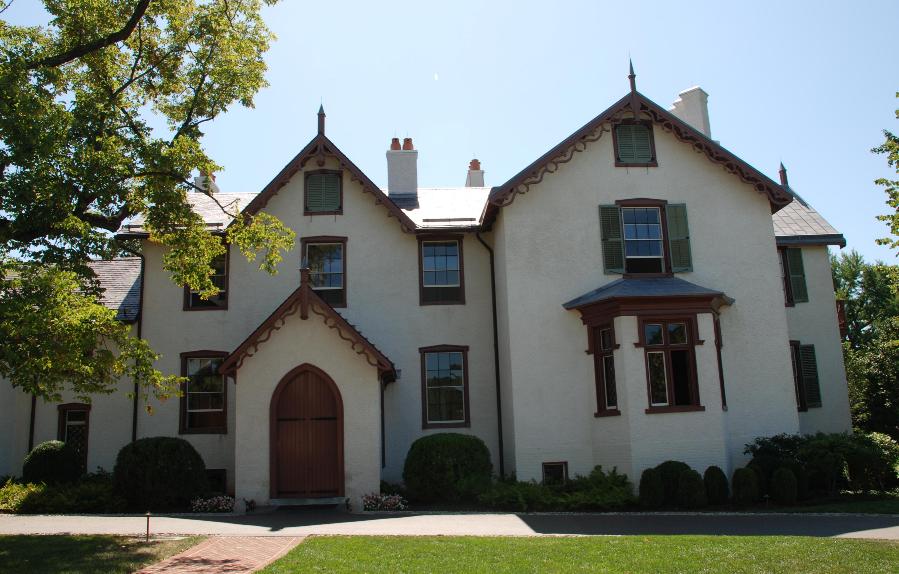
The historic significance of the
Soldiers’ Home was officially recognized in 1974 when four buildings built
before the Civil War, along with six surrounding acres of land, were
designated a National Historic Landmark by the Secretary of the Interior. This
designation celebrated the role of the Soldiers’ Home in the development of
American military asylums and recognized the site as the last remaining
example of three original military asylums established in 1851. The National
Historic Landmark also includes buildings and grounds that are outside the
areas open to the public and visitors to President Lincoln’s Cottage.
President Clinton declared on July 7,
2000 the 2.3 acres of surrounding land the President Lincoln and Soldiers’
Home National Monument, in honor of the site’s notable role in the
presidency of Abraham Lincoln, however, it is officially known as “President
Lincoln’s Cottage,” but remains a National Monument. It is operated by the
National Trust for Historic Preservation.
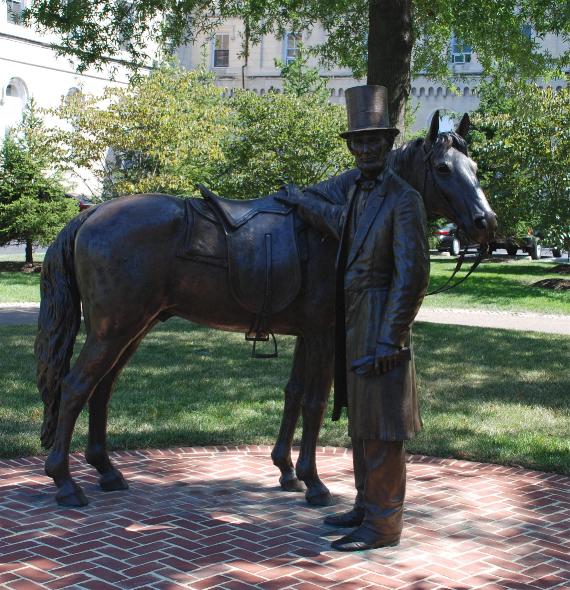
Beginning in the year 2000, the
exterior of President Lincoln’s Cottage was completed in April 2005. The
interior of the Cottage and the renovation of the Robert H. Smith Visitor
Education Center (pictured below) were completed prior to the site opening to
the public in February 2008. Additional landscaping was taking place in the
spring of 2008.
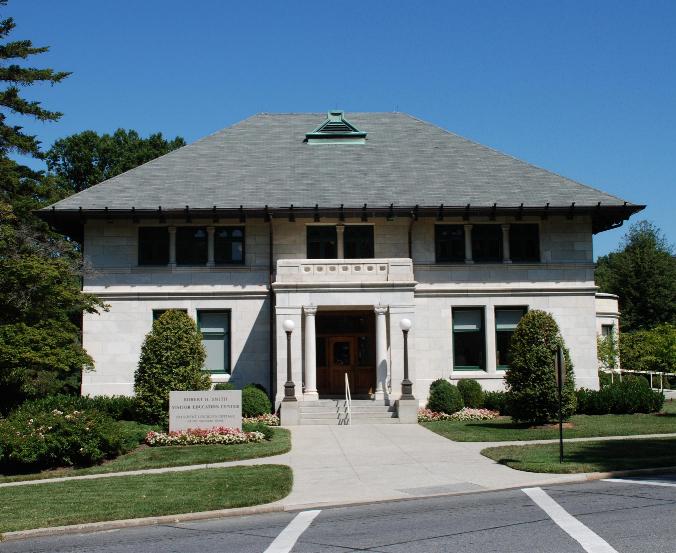
In the summer of 2008, my wife and I
visited the President Lincoln Cottage. I could easily see what Lincoln and
his family saw in wanting to stay here versus the White House. Located on a
very picturesque hilltop, the breezes that can be felt still today were
wonderful and refreshing, one of the reasons the Lincoln family retreated here
in the hot summer months. One can imagine the president riding his horse, as
he did, from the White House to the Cottage on a summer morning. You can
almost hear the Union troops that occupied the grounds during the Civil War,
and unfortunately were omnipresent during much of the Lincoln families stay.
President Lincoln and his family
resided here for much of June through November of 1862, 1863 and 1864.
Escorted by his Cavalry Guard Lincoln rode to the White House each morning
either on horseback or by carriage, and returned each evening to rejoin his
family and friends at the Home. Here, as well as in the White House, you can
almost imagine the immense burden that Abraham Lincoln must have felt during
his wartime leadership. While touring the house, my wife and I were fortunate
to be seated at a table that had on its surface a checkers game board. While
momentarily playing a game of checkers, while also looking out the window, I
could imagine quite vividly President Lincoln, relaxing, doing the same thing
at this exact location. While the Home had little furniture, the lighting
fixtures and other treasures about the Home were original. Outside on the
grounds, the wonderful statue of President Lincoln and his horse is not to be
missed. Standing next to the statue, looking at the Home, makes you feel for
that moment that you’re actually next to, and talking with Abraham Lincoln.
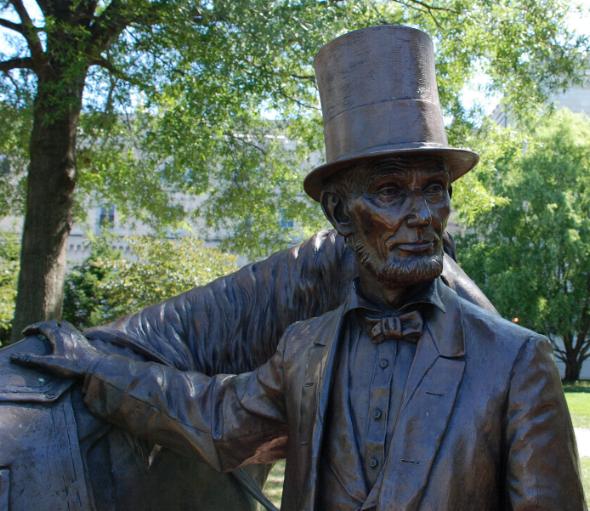
Abraham Lincoln was often described
during his presidency as sad, restless and always anxious about the war and
future of his country. As mentioned on the tour of the Home, an officer from
the Union Light Guard that was stationed at the Soldiers’ Home encountered the
President outside around midnight one evening. The officer remembering this,
said:
“I saw a man walking alone and
leisurely across the path I was taking…and as I came near him I saw it was Mr.
Lincoln. At an earlier hour I would have kept from speaking, but, prompted by
anxiety, I said, ‘Mr. President, isn’t it rather risky to be out here at this
hour?’ He answered, “Oh I guess not…I couldn’t rest and thought I’d take a
walk.” He was quite a distance outside the line of infantry guards about the
house where the family was staying. He turned back after I spoke to him, and I
passed on to where the escort was camped.”
Lieutenant George C. Ashmum, officer
of the Union Light Guard.
In spite of Lincoln’s wartime
responsibilities, even here at the Home, he often took the time to play with
his son and also to read his favorite books. He did use the Cottage as a quiet
setting from the busy atmosphere of the White House; to schedule important
meetings, visit with well-wishers, as well as solitary reflection as he
pondered decisions of national importance.
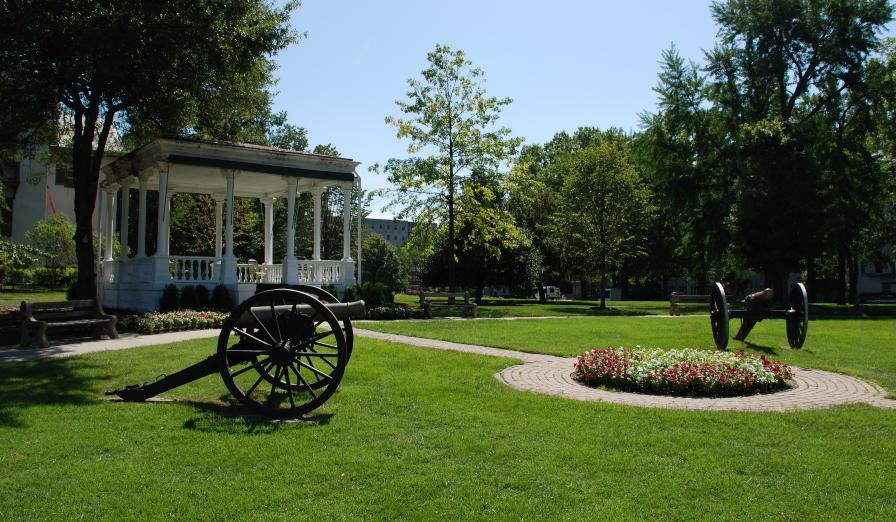
The Lincoln Cottage was dedicated on
February 12, 2009 on the Bicentennial of Abraham Lincoln’s birth.
I highly recommend a visit to
President Lincoln’s Cottage. Besides the Cottage, its grounds, and the
Visitor Center, there is also a wonderful gift shop. The site is located at:
140 Rock Creek Church Road, NW, Washington, D.C. To get here, the Entrance
Gate to the Armed Forces Retirement Home is at the intersection of Rock Creek
Church Road, NW and Upshur Street, NW. It is open Monday through Saturday,
09:30 a.m. to 4:30 p.m., and Sundays, 10:30 a.m. to 4:30 p.m. Tours of the
Cottage Monday-Saturday begin at 1000 a.m., with the last starting at 3:00
p.m. Tours on Sunday begin at 11:00 a.m., with the last tour also at 3:00 p.m.
It is closed on Thanksgiving, Christmas and New Year’s Day.

Copyright © 1993-2022 (2012) by John T. Marck. Also Copyright © 2012 National Trust for
Historic Preservation in the United States, 1785 Massachusetts Ave., N.W.,
Washington, DC, 20036, U.S.A.. All Rights Reserved. All content for this
article, except observations and statements concerning my personal visit to
President Lincoln’s Cottage and the Robert H. Smith Visitor Education Center
and Gift Shop, are from the President Lincoln’s Cottage and the National Trust
for Historic Preservation. Grateful assistance and appreciation is extended to
the National Trust for Historic Preservation for information from their web
site as well as information received from my personal visit to the Cottage.
All photographs used herein are Copyright © 2008-2012, John T. Marck.
Information from this article and its photographs may not be used or
reproduced without permission.

